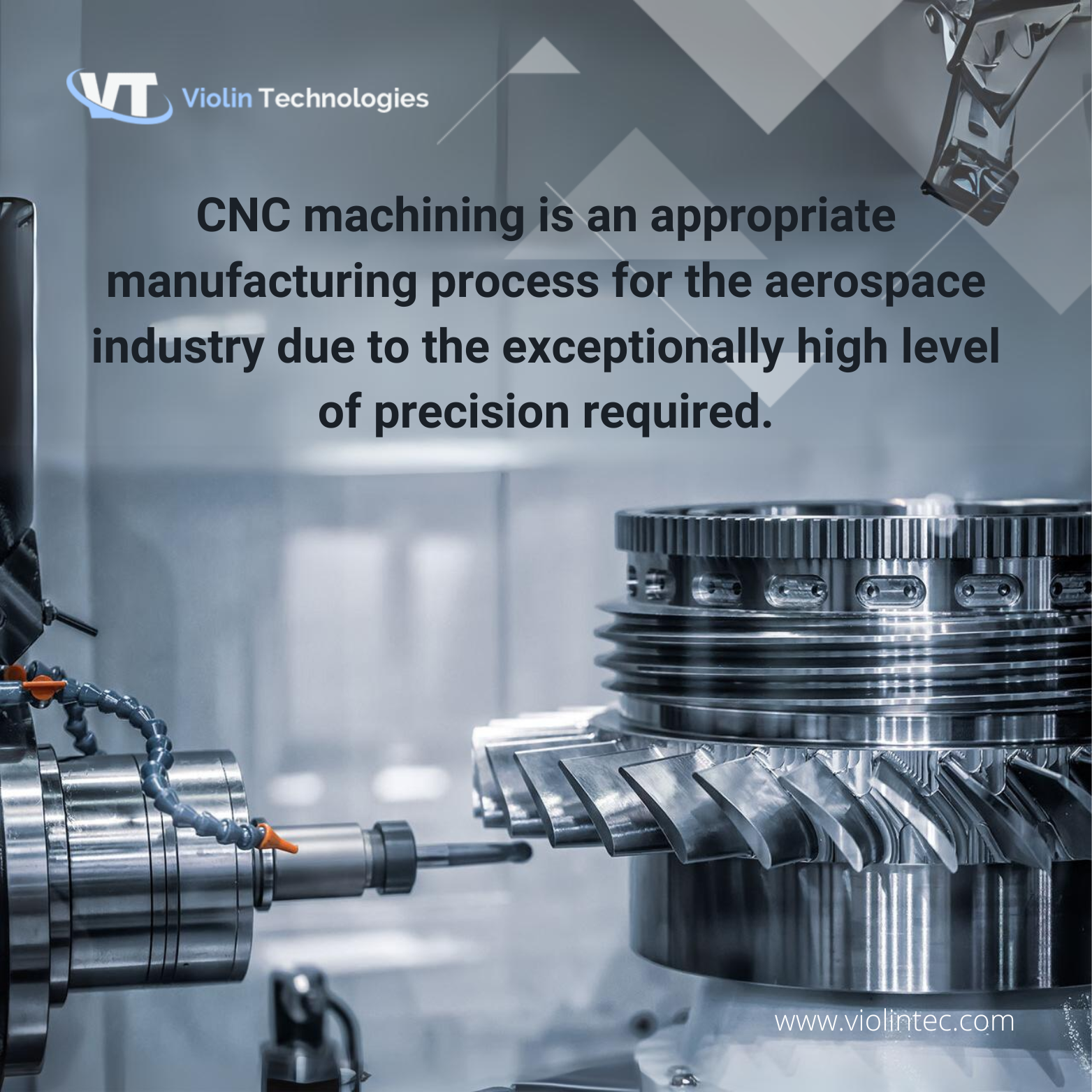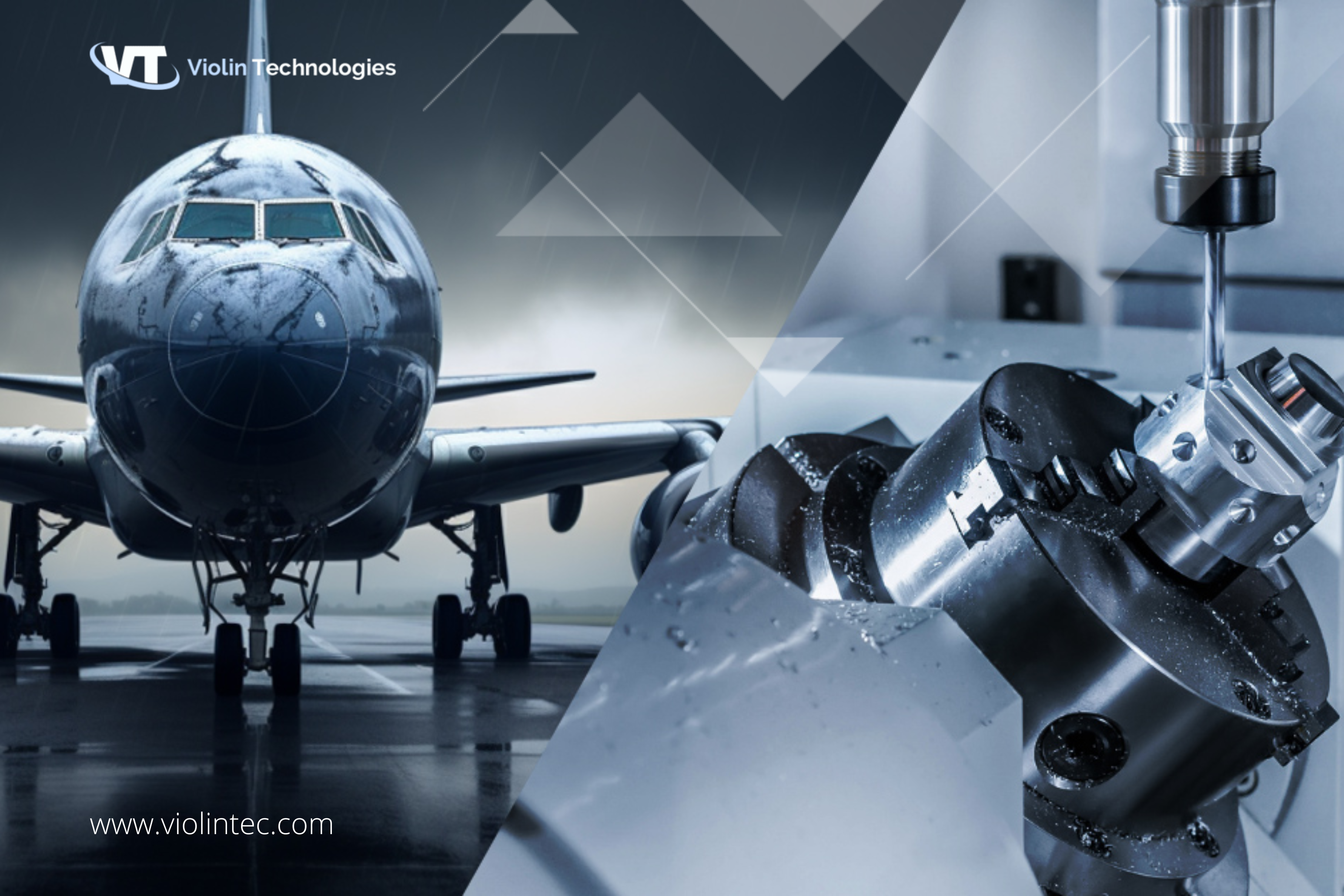Furthermore, the aerospace industry has greatly benefited from CNC hybrid technologies with lightweight components like electrical connectors. The integration of 3D printing with additive manufacturing and CNC processes has led to quicker lead times, higher quality, and reduced costs. Keep reading as this blog gives you an overview of aerospace machining and its significance.
CNC Machining
CNC means computer numerical control. It’s a manufacturing process that creates custom parts by removing material from a stock piece using computerized controls and machine tools. This computer aided design process produces high-precision parts at a cost-effective price for one-off and medium-volume production runs.
Aerospace CNC Machining
Aerospace manufacturing companies use CNC machining for aerospace, both for prototyping and manufacturing. Precision CNC machining can be used to prototype and contribute to ongoing concept development, testing new design valve components, and validating the use cases of new components. In short, CNC machining is a precise manufacturing process for complex designs.
Aerospace CNC Materials
Aerospace CNC machining can work with a variety of materials, meeting the unique needs of complex parts with low tolerances. Common materials used for CNC machining aerospace parts include aluminum, titanium, stainless steel, and high-performance plastics.
- Titanium alloys: Titanium is a strong and lightweight metal that is resistant to heat and corrosion. It is heavier than aluminum but lighter than steel, making it a versatile material that is used in various industries. It is commonly used instead of steel, which is considered too heavy for many applications.
- Aluminum: Aluminum is commonly used in commercial and cargo aircraft for its lightweight, complex geometries, corrosion resistance, and fuel efficiency benefits.
- High-performance plastics: Plastic components are used in the cabin and structure to reduce weight, resist corrosion, and provide flexibility where needed.
Aerospace machined parts require custom designs, making it challenging for aerospace manufacturers to find partners for aerospace parts. It is crucial to work with contract manufacturers who are experts in both aerospace parts and CNC machining and who have the experience to take on your projects and reliably manufacture durable parts.
Precision CNC In Aerospace
Precision CNC machining is vital to attain precision and strict tolerances in aerospace CNC machining processes for all aerospace component applications. Five multi-axis CNC machines and 9-axis milling machines can machine complex parts while meeting strict tolerances. Although precision CNC for aerospace part production can use either machine, 5-axis machines are commonly preferred. They can machine complex shapes accurately and add surface finishes, making them an excellent choice for precision aerospace CNC machining parts manufacturers.
A 9-axis CNC machine, like a 5-axis machine, can machine complex parts with precision. Still, it also has the added ability to turn and rotate the component, providing enhanced versatility, a high degree of precision, and consistent results. Both types of machines are used extensively throughout precision engineering, machining, and aerospace applications due to their ability to meet exact specifications and tight tolerances without sacrificing durability.
For custom aerospace machining, finding a precision machined components manufacturer with the right equipment and skills for precision machining can create durable, precise custom aerospace parts.

Aerospace CNC Machined Components
Different materials used in aerospace projects are based on necessary attributes for aerospace applications and manufacturing. These materials can be used in aerospace CNC machined parts such as landing gear, turbine blades, or airframe components.
Also, aerospace components need specific finishes or coatings because they are lightweight and are used in an aircraft. Using CNC machining processes, you can finalize spacecraft components for the project with finishes and coatings, eliminating the need to involve another manufacturer. Some of the benefits of using finishes and coatings on aerospace CNC components include:
Hard coating
This coating process involves the application of titanium nitride to enhance wear resistance and reduce friction.
Painting
Painting aircraft not only enhances aesthetics but also provides weather resistance and increased durability compared to other types of paint.
Powder coating
This dry powder coating is free-flowing and provides a durable finish, enhancing resistance to scratches, chips, and corrosion.
Thermal spray coating
Thermal sprays can be made of ceramics, alloys, or metals, all aimed at providing a protective coating to the component.
Anodizing
This process forms a corrosion-resistant oxide layer on aluminum parts and is widely used for wear resistance and insulation.
Quality Control And Certification
Precision machining in aerospace requires robust quality control practices, and manufacturers must be certified to meet industry standards.
- Material inspection: Manufacturers must inspect raw materials before beginning production to ensure they meet quality standards. The use of low-quality materials can result in lackluster products, even with the best manufacturing process.
- Frequent calibration: CNC machines should be regularly calibrated to ensure they maintain accuracy throughout operations.
- Process validation: Every step throughout the CNC machining process must be validated to ensure design specifications are met.
- Documentation and traceability: Detailed records must be kept from material sources to industry standards and certifications. Documentation also allows your teams to investigate the cause of any defects more easily.
In addition, CNC machining organizations need certifications like NADCAP (National Aerospace and Defense Contractors Accreditation Program), AS9100, FAA Certifications, and ISO 9001. Otherwise, compliance may be jeopardized.
Contract manufacturing company in Chennai, with their qualified manufacturing services, manufactures aerospace prototypes and end-use components for aerospace industries using cutting-edge CNC machining technology.
Conclusion
CNC technology with advanced 5-axis and 9-axis machines has revolutionized the aerospace industry by providing unparalleled precision. This technology has increased productivity, improved safety, and reduced human error. Automated material handling and advanced tooling used during the CNC process have led to even greater productivity and accuracy.
In short, CNC technology is crucial to the aerospace field as it is capable of ensuring accuracy, high precision and efficiency. It allows for new prototyping processes, quick iterations of designs, and precise production of aerospace parts with a variety of materials. Contact us today as we are prepared to meet your aircraft production requirements while maintaining a focus on safety and risk management.

Aparna Sushumna
About the Author
Aparna Sushumna, a mother to a hyperactive toddler who is all over the house. I aspire to be a decent content developer. A Bachelorette of technology says my qualification but I anticipated being a singer. Thanks to the recession, I dwelled into various jobs, from coding to being a tech support executive to a help desk professional, only to conclude that there is something else I wish to do. Here I am to accomplish my profound passion for content writing. Music, nature, jewelry, beauty, mythology, life quotes, celebs, and their life, being my areas of interest.

